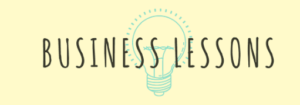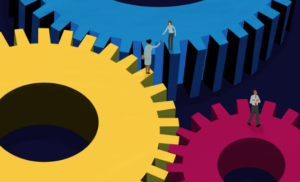Have you noticed that you learn best when you examine the work and results of others? We certainly feel you do. In this article we will examine three great customer cases. All of these offer some excellent points you can apply to your business that will help amplify your marketing.
Related: My Favorite Customer Service Blogs
Case 1
I’ve been with the same dentist for more than 15 years. He’s friendly, personal, and generally on time with his service schedule. I have considerable confidence in his abilities and he had my business loyalty, at least until now.
He does what I expect a dentist to do and he does it explaining all the issues and options without having to play 20 questions with him. For that reason I never thought about considering a change in service providers.
Then one day my wife and I started spending our winters in Florida. And now the option of finding a Florida dentist became a necessity.
The new dentist changed my entire perspective on the service expectations that I had developed over the past 15 years.
This new dentist was younger and surely ‘less experienced’. But it didn’t seem this way. He was much more personal, asked important questions, spent more time with me, and did a more thorough job.
That experience opened my eyes to the quality differences with my current dentist.
I had come to expect quality and service that was very good. But the new dentist provided something even better.
Now every time I am in need of standard dentist action, such as annual checkup, etc., I plan my appointments for our time in Florida. The Florida doctor has won my standard business.
The business lesson here?
If you are any type of service provider, never become complacent. Don’t provide standard, average or just good enough service. Always look for ways to continuously improve your service and do things better.
Because the day someone provides better results, service, or quality than you do, is the day your customers’ loyalty will dry up. Left unchanged and not corrected so too may your business.
Case 2
Ever been to Disney World? With most of our family living 50 miles away, we often felt like tour guides. Not a bad thing though. Lots any business can learn from Disney’s customer experience design and operations. A real difference maker.
Disney puts a tremendous amount of attention to its parks’ customer immersion and customer experience; in fact, one could say the Disney theme park mystique is 100% about immersing the customer in the culture of Disney movies and character history. Over 150,000 employees are employed ‘on stage’ each day at Disney parks to help create this customer experience immersion.
What are the ways Disney uses its park designs and ‘on stage’ employees to create the best possible customer experience?
Consider Disney’s explicit operations and design principles:
Care for customers
In front of nearly every ride was stroller parking and in Magic Kingdom, there were plenty of strollers because nearly every group had some small children. There were areas set aside for stroller parking, and clear instructions for where to park your stroller. Guess what? Customers still managed to ignore them.
In most places, this might create chaos. Not at Disney, where they have a ‘stroller guy’ whose entire job it was to pick up after lazy customers. We have seen them organize strollers into lines, put errant Sippy cups back into cup holders, and keep his little area of the park neat and organized.
All customer facing employees are responsible for ensuring parks remain clean, friendly, organized, and most of all, fun.
Immerse customers in the brand
At Disney, you can’t look in any direction without seeing the Disney branding all around. In the park it works to surround you with the Disney experience at every moment, even when some parts of the park are under construction.
Not to mention the side benefit of Disney likely negotiating some discount on the construction work from businesses in exchange for allowing them to put their brand on the signage seen by millions of park customers.
Lots of help and directions
All stage employees are encouraged to be ‘assertively friendly’. They are to seek out those who look like they need help, before they come looking for help.
The parks at Disney are very large and directions can be confusing. The last thing customers need is to not be able to find what they are looking for. As a result, signs have to be super easy to navigate and offer simple ways to get from one place to another. Disney does a great job keeping their signs easy to understand.
They also have logical layouts for parks and plenty of places to pick up copies of maps as you’re walking around their parks.
Each employee is encouraged to offer random acts of kindness often.
The Fast Pass system at Disney is a work of analytical art that is designed to keep people moving through attractions faster and in a more optimized way. To use it, you just insert your own park ticket and the Fast Pass will give you a specific time to return to a ride in order to board it without a wait.
Only one active at any one time however. At several, you also got the unexpected surprise of a bonus ticket to a nearby (and usually less popular) ride. Thanks to this bonus ticket, you had the chance to ride an extra ride in the same time and feel just a little better about your experience all day.
A random act of kindness that costs nothing.
Be flexible with rules
Many of the rides take photos of you while you are on board. Those photos are sold to riders after the ride, a classic amusement park upselling technique. At Disney, they show you the images and put a person below those images just standing by to answer questions.
Of course, some people will just take a cell phone photo of their image instead of buying one. Many places would put up big signs preventing that. Disney, instead, puts a person there working under the photos to make it a little more socially awkward to take a photo of your photo, but they don’t outlaw it. The result is that they probably still get a high percentage of people buying the photo who really want it. They don’t need to have the typical rule outlawing the inevitable group of people who are happy with lower quality photo they take themselves.
Educating while entertaining
Many places in all the parks Disney provides educational material on signs around the parks. This is particularly true in EPCOT and the Animal Kingdom, and special events like the annual garden show at EPCOT. Can’t be too much of this in our opinion.
Offer reassurance
Everyone ‘on the stage’ has a cast role, and as such, is responsible to contribute to the positive customer experience by being as helpful and assuring as possible.
When we traveled to Australia, we frequently ran into the expression a ‘nervous nelly’ used to represent a timid or always apprehensive person. We all know people like that. They check a map constantly even when they are going the right way, and usually find a reason to worry about something.
Disney does a great job of making sure those people feel at ease, with plenty of places and people to answer questions.
Show ready
Each customer facing employee is expected to be ‘show ready’ whenever they are on stage. Everyone has a part to play as a component of the show. On stage, the show is on and everyone follows costume and customer interface guidelines. Breaks and relaxing are ONLY allowed in areas unavailable to guests.
Disney certainly knows all there is to know about customer immersion and customer experience, don’t they? It’s a culture handed down by Walt himself.
Companies that are proactively managing all elements of their customer experiences are most successful in achieving customer loyalty. It is awesome marketing isn’t it.
Case 3
I stayed in a new Marriott Courtyard hotel a while back. The situation was that it was recently opened and should not have been opened until the problems were worked out and management was ready. There were many problems, believe me and it started as a significant customer failure.
But not only did the staff take care of the issues for me, the manager, once he got me back to ‘even’, continued to build the relationship with me. His techniques included exceptional, personalized service, using my name in face-to-face greetings, and continued follow-up and attention to detail. He actually made me believe I was the best customer he had ever had. Not only did I forget about the earlier problems, but I was feeling great about the entire three-day experience.
Service recovery requires remaining with your customer, through follow-up, and through unexpected contact well after the issue. All customers deserve our best service, but the ones that have a negative experience represent an opportunity to define a business.
Such an opportunity represents an opportunity to turn customers into enthusiasts and maybe even advocates. And that requires going beyond the ‘break-even’ point for that customer.
Research has shown time and time again that customers who reported a problem and were delighted with the outcome have higher satisfaction with the business than the ones who never experienced a problem. So these results show the importance of turning customer failure into full customer recovery.
Why should any company not want to seize such a great marketing opportunity?
Try it … the next time you have a customer who has had a back experience with your business. You will be amazed at the results.







